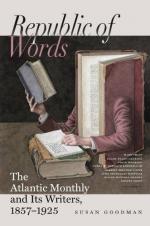Until recently, no attention has been paid, even in Europe, to historical sequence and special motives in the arrangement of galleries. As in the Pitti Gallery, pictures were generally hung so as to conform to the symmetry of the rooms,—various styles, schools, and epochs being intermixed. As the progress of ideas is of more importance to note than the variations of styles or the degree of technical merit, the chief attention in selection and position should be given to lucidly exhibiting the varied phases of artistic thought among the diverse races and widely separated eras and inspirations which gave them being. The mechanism of art is, however, go intimately interwoven with the idea, that by giving precedence to the latter we most readily arrive at the best arrangement of the former. Each cycle of civilization should have its special department, Paganism and Christianity being kept apart, and not, as in the Florentine Gallery, intermixed,—presenting a strange jumble of classical statuary and modern paintings in anachronistic disorder, to the loss of the finest properties of each to the eye, and the destruction of that unity of motive and harmonious association so essential to the proper exhibition of art. For it is essential that every variety of artistic development should be associated solely with those objects or conditions most in keeping with its inspirations. In this way we quickest come to an understanding of its originating idea, and sympathize with its feeling, tracing its progress from infancy to maturity and decay, and comparing it as a whole with corresponding or rival varieties of artistic development. This systematized variety of one great unity is of the highest importance in placing the spectator in affinity with art as a whole and with its diversities of character, and in giving him sound stand-points of comparison and criticism. In this way, as in the Louvre, feeling and thought are readily transported from one epoch of civilization to another, grasping the motives and execution of each with pleasurable accuracy. We perceive that no conventional standard of criticism, founded upon the opinions or fashions of one age, is applicable to all. To rightly comprehend each, we must broadly survey the entire ground of art, and make ourselves for the time members, as it were, of the political and social conditions of life that give origin to the objects of our investigations. This philosophical mode of viewing art does not exclude an aesthetic point of view, but rather heightens that and makes




